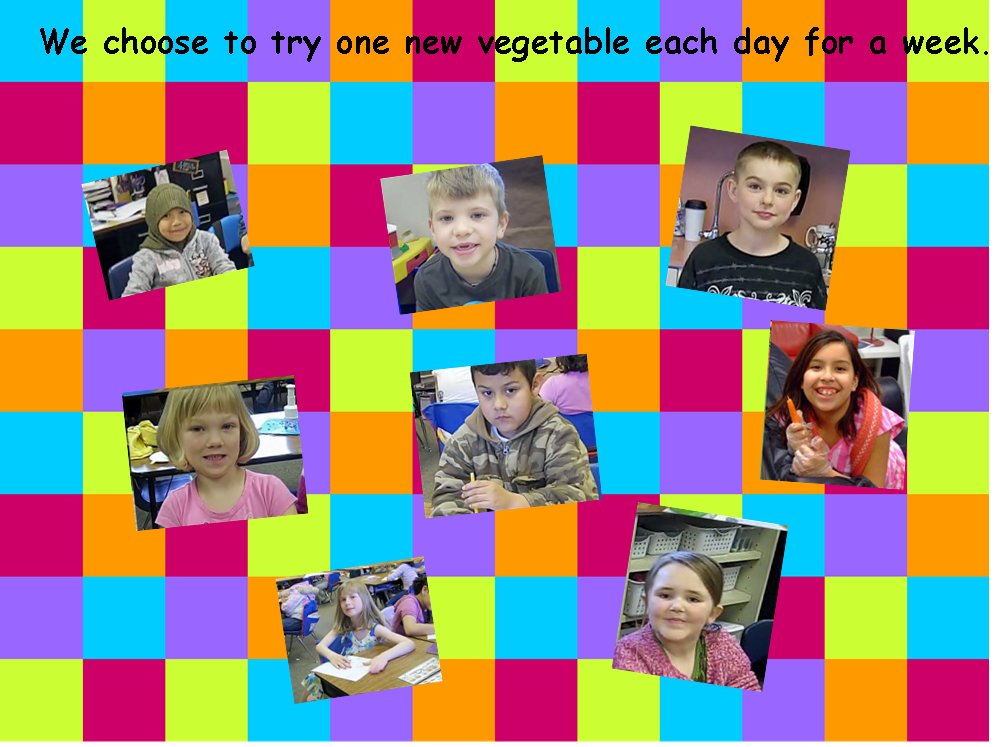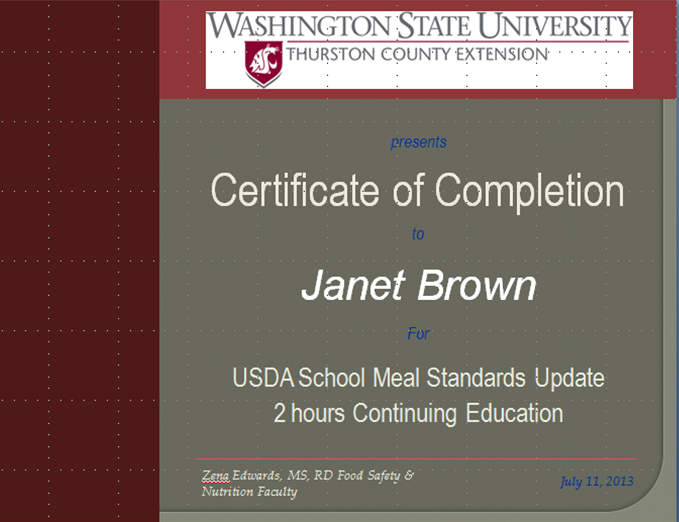 Individuals make thousands of decisions each day and are faced with hundreds of food choices. If we had to stop and analyze every decision completely we would never get anything done. That is why we often look for shortcuts or clues to help us out. And students are no different.
Individuals make thousands of decisions each day and are faced with hundreds of food choices. If we had to stop and analyze every decision completely we would never get anything done. That is why we often look for shortcuts or clues to help us out. And students are no different.
Robert Cialdini has systematically studied over 60 years of research on the psychology of behavior change. He has identified Six Persuasion Principles, or “decision triggers” that prompt us to say “yes” to a request or specific behavior: Liking, Reciprocity, Scarcity, Consistency, Consensus, and Authority. Although these principles have yet to be specifically tested in the school environment, they are based on sound scientific research and are considered by the USDA to be a key theory for achieving behavior change.
The Six Persuasion Principles offer an alternative to restriction and elimination of choices that tend to lead to rebellion and allow youth to take ownership of their food choices. At any given time at least one of these principles are available to influence students’ dietary behaviors without force or coercion while helping them get into the lifelong habit of making healthier choices when faced with an array of real world food options.
LIKABILITY
We have an inner desire to respond to requests to those we like. Likability is a huge factor in political campaigns and is considered the most important factor when predicting the success of an advertising campaign. We like people who are similar to us and offer praise and cooperation.
- Of course WE all know the lunch ladies (and lads) are very likeable! But does everyone else know how likeable they are? Make a colorful handout or poster saying “Meet Jane Doe!” Include pictures of the individual with kids, family, enjoying friends. Have them share a bit about their professional and personal lives. Find ways to highlight similarities with students.
- Train staff to “like” the students they serve first. This can be a challenge, given that the love and care staff put into providing nutritious meals is not always appreciated or recognized! Encourage them to smile, learn as many names as possible, look for opportunities for genuine compliments and seek out ways to be helpful to the students they serve. Of course, food service directors and supervisors who model for these techniques with their will see the most success when implementing the principle of likeability.
- For more about how to leverage likability see “Serving Up the Smile Factor.”
RECIPROCITY
We want to give back to those who have given to us first. This is the principle of reciprocity. Incentives have their place, but gifts are a very powerful tool for influencing behaviors. Gifts are most effective when they are personalized, unexpected, and truly have no conditions attached. The good news is gifts do not have to be expensive. Here are some ideas for low or no-cost gifts:
- Food service staff will be more likely to respond to requests to implement lunchroom changes if they are given full respect, attention, understanding and recognition.
- Randomly write out a very short thank you card or “you make a difference” note to your staff. Look for ways to engage them with your efforts and help solve their problems.

SCARCITY
We value and want things more when they are rare, scarce, or exclusive. We especially desire items or opportunities that are both limited in number and available for a limited time. Here are some suggestions for using the principle of scarcity to improve the likelihood healthier foods will be eaten:
- Let a new, healthier item run out when first introducing and put up a sign or other means of communicating that dish is not longer available.
- Promote healthier foods as “limited edition” or “signature special.”
CONSISTENCY

We want to be consistent with what we have said AND how we think others view us. We have all have heard the power of goal setting. Goal setting or “making a pledge” is most effective when voluntary, active and involves a public commitment. Once we take a stand we want to be consistent. Creating a pledge activity uses the power of consistency to promote new habits:
- Ask students to choose a single food behavior each week and pledge to do it such as “try one new food on the lunch line,” “eat one more fruit”, “eat one more vegetable”, “drink milk with lunch”, or “eat at least one whole grain at lunch.”
-
 Ask students to write down their weekly pledge or sign a poster board and hang it in the classroom or cafeteria. Don’t pressure any student to sign the pledge if they don’t want to; but also let students know that if they change their mind they can add their name to the board at any time.
Ask students to write down their weekly pledge or sign a poster board and hang it in the classroom or cafeteria. Don’t pressure any student to sign the pledge if they don’t want to; but also let students know that if they change their mind they can add their name to the board at any time. - Encourage students to work on their pledge at home too by writing down the pledge, sharing with parents and posting on their refrigerator.
CONSENSUS
Pledge boards support another persuasion purpose: To build social proof that engaging in the behavior is the right thing to do simply because “everyone else is doing it!” The principle of consensus says that we look to “many others” and “similar others” for cues to social acceptable behavior. This is especially true when we are in a new or uncertain situation. Try these tactics for tapping into the superpowers of social proof:
- Post testimonials, preferably with a photo of the student, in public places (cafeteria, hallways, classrooms) of one or more students talking positively about the healthier foods offered in the cafeteria. Of course, make sure you are tapping into a wide range of likeable students!
- Avoid if possible, talking about “negative” statistics or data related to healthier foods such as “3 out of 4 students don’t eat enough vegetables.” This is likely to just reinforce the social norm that “nobody else is eating vegetables” and possibly make students feel like they are not normal if they are eating vegetables!
- Instead, post data or statistics to show that eating fruits, vegetables, whole grains, and low fat dairy foods are starting to become the norm. For example, is there any data to show that more of these foods are being consumed in the cafeteria? Or what about a student survey indicating that 4 out of 5 students agree it is important to eat more fruits and vegetables? Post that information in prominent areas or even directly on the food line.
AUTHORITY
We look to individuals with more knowledge and experience for prompts on how to think or act. We are also more likely to consider an individual or organization more reliable and trustworthy if they admit a weakness in their case. Here are some ways to highlight authority and build credibility with school staff, parents, students and community members:
- Admit one (just one!) weakness in your case before stating a positive or emotions-based argument for eating healthier foods. For example “it does seem a little weird to have sweet potatoes for breakfast, but why save this sweet treat just for Thanksgiving!” or “some of our cereals are high in sugar, but we are working on helping children change their preferences.”
-
 Most people are probably not aware of the amount of training school foodservice staff complete. They truly are child nutrition experts-go ahead and brag a bit! Post copies of ServeSafe or other certified food protection manager training certificates in prominent areas in the cafeteria. Have staff list their training, experience and certificates on their “Meet Jane Doe” flyer or poster. Make an announcement to the entire school or community or post a congratulations flyer when staff attend trainings and be sure to note any relevant specifics: training topic, hours of training, continuing education credit earned, exams passed and high scores received.
Most people are probably not aware of the amount of training school foodservice staff complete. They truly are child nutrition experts-go ahead and brag a bit! Post copies of ServeSafe or other certified food protection manager training certificates in prominent areas in the cafeteria. Have staff list their training, experience and certificates on their “Meet Jane Doe” flyer or poster. Make an announcement to the entire school or community or post a congratulations flyer when staff attend trainings and be sure to note any relevant specifics: training topic, hours of training, continuing education credit earned, exams passed and high scores received.
Contributor
Zena Edwards Washington State University Extension
Sources
Just, D., Mancino, L., and Wansink, B. Could Behavioral Economics Help Improve Diet Quality for Nutrition Assistance Programs? USDA Economic Research Service. Economic Research Report Number 43. June 2007.
Just, D. and Wansink, B. Smarter Lunchrooms: Using Behavioral Economics to Improve Meal Selection. Choices. 3rd Quarter 2009. Available at: http://www.choicesmagazine.org/magazine/article.php?article=87
Cialdini, R. (2009). Influence: Science and Practice. Pearson/Allyn & Bacon, Boston.
Key Theories, Applications, and Processes Related to Training WIC Staff. USDA Women, Infant and Children WIC Works Sharing Center. Available at: http://www.nal.usda.gov/wicworks/Sharing_Center/WesternConsortium/keytrainingtheories.pdf
Tapping into the Power of Influence. USDA Women, Infant and Children WIC Works Sharing Center. Available at: http://www.nal.usda.gov/wicworks/Sharing_Center/gallery/powerofinfluence.htm
We Influence Change website. Chickasaw Nation WIC.
